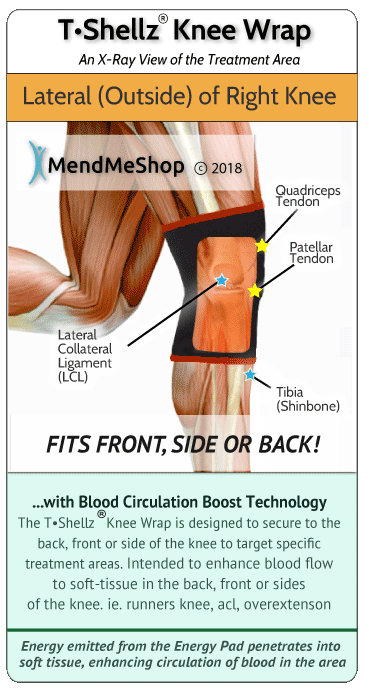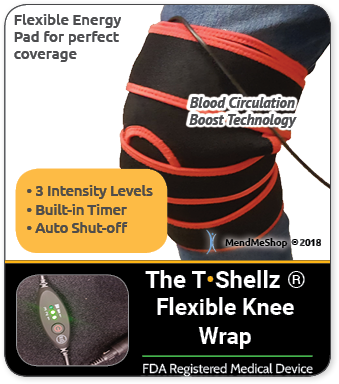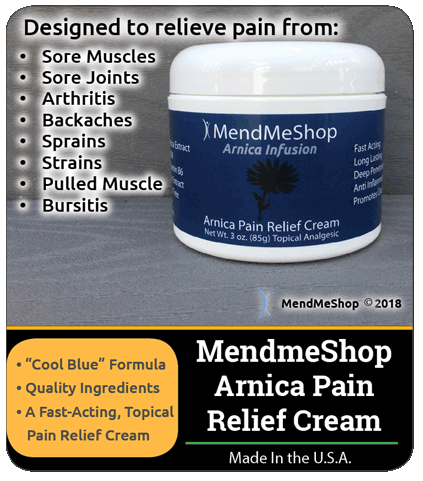|
|
An Overview of Lateral Meniscus Tears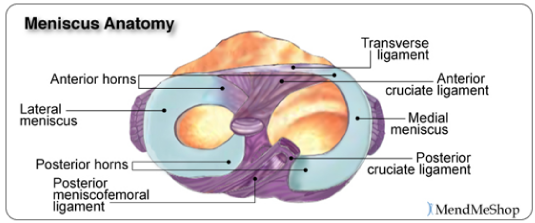 The menisci are attached in the middle of the joint by ligaments. They're also surrounded by ligaments on the outside and inside of the joint (the anterior cruciate ligament - ACL, posterior cruciate ligament - PCL, medial collateral ligament - MCL, lateral collateral ligament - LCL). The entire knee is then surrounded by leg muscles and tendons to hold the whole structure in place. The Lateral Meniscus is More Mobile Than The Medial MeniscusThe lateral meniscus is held in place at two points. One point is at the anterior horn location where the lateral meniscus attaches to the tibia via the anterior cruciate ligament (ACL) which is in the center front of the knee. The other point is at the posterior horn location where the lateral meniscus attaches to the meniscofemoral ligament. Unlike the medial meniscus the lateral meniscus doesn't attach to a collateral ligament (LCL) . With only 2 anchor points on the anterior and posterior horns, the lateral meniscus floats freely inside the small space of the knee joint. In comparison, the medial meniscus has three anchor points as has much more limited movement in comparison to the lateral meniscus. Since the lateral meniscus moves more freely in the knee joint, you are less likely to suffer from a lateral meniscus tear than a medial meniscus tear.  This mobility of the lateral meniscus makes it less likely to get a bucket-handle tear as the meniscus is more sharply curved and isn't attached to the LCL. Instead when the lateral meniscus is placed under stress it pulls apart in the center, making it more likely to have an incomplete transverse tear, radial tear or oblique tear. If the force on the tissue is enough, the lateral meniscus may tear in half or rip so severely that it hangs by one thin fiber. Imagine taking both ends of an orange wedge in your hand. When you pull these ends about the orange wedge will split in the middle. Your lateral meniscus can get torn in the same way. The lateral meniscus gets injured most often on the posterior horn, the section of the meniscus at the back of the knee. What Causes a Lateral Meniscus injury? Anyone can injure their lateral meniscus badly, though the lateral meniscus is most often injured from sudden and traumatic accidents. This can happen from sudden stopping or deceleration, sudden changes in direction with the leg - like when your foot is fixed / planted on the ground and a twisting force is applied to your knee. It can also get injured with a combination of excessive straightening or bending of the knee which is what happens in a forceful jump or landing, and / or direct side impact to the knee joint Athletes that play sports that involve a lot of bending of the knee run an increased risk meniscus injuries. This includes athletes who participate in sports like volleyball, football, soccer, basketball, hockey and racquet sports. There are 3 sports where athletes are more prone to tearing their lateral meniscus (as opposed to the medial meniscus); tennis, weight lifting and skiing. Young athletes are more likely to suffer a lateral meniscus tear along with an anterior cruciate ligament (ACL) injury. The center or middle body of the lateral meniscus stretches outward when force is applied because it's anchored at the 2 ends (anterior and posterior) while the middle floats freely in the joint. This is why it's more likely for the lateral meniscus to tear in half and possibly rip so severely that it hangs by one thin fiber.  Degeneration is a very significant cause of lateral meniscus tears; over time, the edges of the meniscus become frayed, jagged, and thin. Any repetitive or frequent movement can place stress on the lateral meniscus over the years when eventually, all of a sudden, a meniscus tear happens. The knee joint itself suffers degenerative changes such as arthritis, osteoarthritis and/or cartilage thinning on the ends of the bones and this gradual wear and tear comes from overuse, repetitive knee movements, twisting or prolonged weight bearing activities. Degenerative changes to the knee happen slowly, so you may eventually suffer a torn lateral meniscus from a simple daily activity - the "hair that broke the camels back" if you will. Be aware that this injury can happen to anyone and is not just isolated to athletes. What are the Symptoms of a Lateral Meniscus Tear? If you've suffered a traumatic sudden injury to your knee while playing sports, swelling on the outer (lateral) side of your knee will happen within a few hours after the injury or in the following days. You may also experience more intense pain when bending, walking, or twisting your knee. You'll continue to feel some tenderness on the outer part of your knee. If your lateral meniscus tear is severe enough you might feel a 'giving-way' sensation (instability) in your knee. This feeling may be combined with locking, catching or clicking in your knee. There is usually pain with weight bearing activity such as climbing stairs and twisting movements of the knee when kneeling or squatting. Degenerative lateral meniscus tears can be subtle, manifesting itself via symptoms of pain that slowly increase over time. You may also notice swelling after exercise or daily activities. If you do have pain, you'll experience pain on the outer side of your knee and possibly feel weakness / instability in your knee with locking, catching or clicking. Pain may increase with certain activities, like climbing a set of stairs, kneeling to put away your groceries or squatting to pick up something you may have dropped.  If you're suffering from a chronic lateral meniscus injury, you might start limping due to severe pain or you'll find that it might be hard for you to stand for long periods of time. A chronic injury could also result in a 'buckling' of your knee when weight is placed on it and loss of range of motion. If you're suffering from a lateral meniscus tear, meniscal cysts are more likely to develop in the knee. This cyst is a collection of fluid that causes more swelling and inflammation in your knee. A meniscal cyst will decrease your range of movement and make it difficult for you to stretch out your knee. You may also feel some tightness because of swelling and tenderness around your knee. If your lateral meniscus injury remains untreated you'll continue to experience some inflammation. The lateral meniscus becomes less 'mobile' during flexing, extension and rotation movements of the knee. This immobility of your knee also increases the likelihood of you suffering from a 2nd meniscus injury such as a bucket-handle tear (longitudinal) or transverse tearing. You might be suffering from a lateral meniscus tear if:
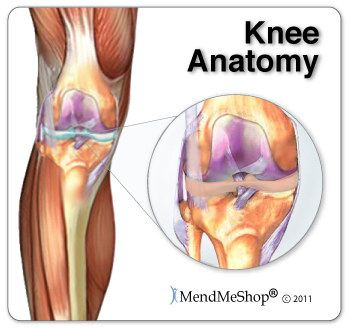 If you found yourself agreeing with many of these statements or you're suffering from on-going pain in your knee then you might have a lateral meniscus tear injury. A lateral meniscus tear is different from a medial meniscus tear because the lateral meniscus carries up to 70% of the weight and contact pressures in the lateral capsule of the knee. The lateral meniscus is also less anchored to the shin bone (tibia), making it a free floating pad of cartilage between your thigh and shin bones (femur and tibia). All of these things make the lateral meniscus different than the medial meniscus, and difficult to deal with when torn or injured. Those suffering with a lateral meniscus tear are more likely to experience degenerative issues leading to osteoarthritis in their joint. This is because the lateral meniscus carries more body-weight than the medial meniscus. 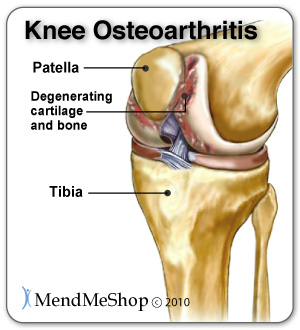 If you have a tear that won't heal or end up going for surgery to shave off or remove some of your lateral meniscus (known as a partial lateral meniscectomy), then this area of your knee has less padding to take on contact force. This force is then focused directly on the bones articular cartilage lining instead of the padding protecting the bone. Greater bone on bone contact leads to more wearing away of articular cartilage in the knee, which speeds up the onset of osteoarthritis in your knee. It doesn't take long for a lateral meniscus tear to worsen - just from the natural forces and weight distribution in the knee. This is why it's important to treat your torn lateral meniscus as soon as you feel pain, then continue to treat your lateral meniscus to prevent further damage and degeneration on the lateral side of your knee. How Do I Diagnose a Torn Lateral Meniscus? The best way to diagnose this condition is with a quick visit to the your doctor for a physical examination of your knee. Range of motion tests will be done to see how much movement has been lost in the knee. There are many conditions other than meniscus injuries that can cause knee pain such as an ACL tear, patellar or quadriceps tendinitis, a fracture, arthritis or knee bursitis. Getting a proper diagnosis is important so you can treat your condition correctly.
Your doctor may consider previous knee injuries or joint stiffness that you may have had in the past. This will help the doctor to determine if you have a more complex injury in your knee and rule out any other knee injuries that may be present. A set of range of motion tests will be completed by the doctor including the McMurray's Test, joint line tenderness and the Ege's test. Your knee might hurt from the doctor poking and prodding at it, but by doing this the doctor will know for sure the source of your pain, the level of tenderness in and around your knee and how well your knee can move with this condition. It's possible for your doctor to think you have a medial meniscus tear if the physical tests and pain present near the opposite side of the knee. This most commonly happens with posterior lateral meniscus tears. The only way to know for sure where your tear is located and what type of tear you have is through diagnostic testing via an MRI. Even then, if the tear is expected to be on the medial (innermost) side of the knee, the MRI may not take an image at an angle needed to see the tear on the lateral side. (source: Campbells' Operative Orthopaedics Twelfth Edition)  Your doctor may suggest diagnostic testing to obtain more detailed information, and assess the amount and/or type of damage done to your knee and meniscus. There are a variety of different tests available to help them analyze the situation; and the recommendation will be dependent on your injury. X-rays will provide an image of the overall bone structure of your knee. It's helpful in identifying abnormal bone shapes, fractures, arthritis, or loose bones and bone abnormalities that may mimic a torn meniscus. Other tests like a bone scan, MRI (magnetic resonance imaging) or blood tests may be done if an x-ray looks normal or the doctor is unsure whether you have a fracture. These tests will also rule out any infections of the bone or tissue and help to determine if you are suffering from other injuries like arthritis or osteoarthritis (degenerative damage). If you are experiencing a build up of fluid in the knee, your doctor may aspirate (use a needle) to remove fluid from the joint to check for bacterial infection. Your doctor will be able to determine whether there is an infection or not by drawing a small sample of the synovial fluid with a needle. If it is determined that there is an infection, you will be prescribed antibiotics to get rid of the infection and the physician may pursue deeper inspections into determining the source o infection. If you suspect you may have a lateral meniscus tear injury,
Are You Sure You Really Have A Torn Lateral Meniscus?Although tears of the lateral meniscus are considered common injuries (though not as common as tears of the medial meniscus), there are several injuries/conditions/pathologies that are symptomatically similar to a lateral meniscus tear. 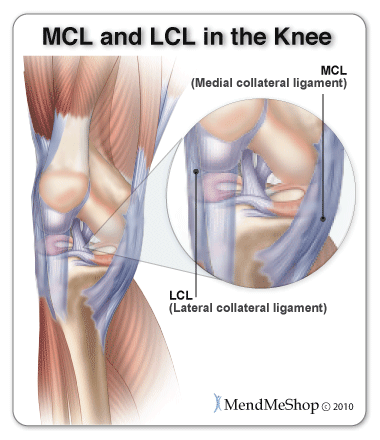 Anterior Cruciate Ligament Tear(ACL Tear)This is the most common ligament that is associated with a lateral meniscus tear, meaning that if you suffer a lateral meniscus tear it is not uncommon to suffer from an ACL rupture as well. Illotibial Band Syndrome (ITBS)ITBS pain can manifest in the hip but most commonly manifests in the lateral aspect of the knee. Basically ITBS is a common problem and when the pain location is on the outside of the knee, it is a very similar pain location that would manifest for a lateral meniscus tear. Snapping Biceps Femoris TendonThe biceps femoris tendon connects the biceps femoris muscles (there is a "long head" biceps femoris and a "short head" biceps femoris) to the tibia bone at the outside (lateral) back of the knee. The biceps femoris muscles are two of the four muscles that together are known as the hamstring muscles - a muscle group that is considered one of the strongest muscles in the body. If this tendon is snapping it means the tendon is moving over the fibular head during knee flexing. The location of this tendon is the lateral aspect of the knee and as such, pain felt in this area would be similar in pain location for a lateral meniscus tear. It is also worth mentioning that tendonitis of the biceps femoris would also present a similar pain location. Snapping Popliteus TendonThe popliteus tendon attaches to the upper leg bone on the outside (lateral) of the knee and connects to a small muscle in the back of the lower leg. This condition is fairly uncommon though does present pain location symptoms similar to a lateral meniscus tear. This condition be also misdiagnosed as ITBS and in some cases only properly diagnosed through arthroscopic imaging. Peroneal Nerve Compression SyndromeAs you may know, there are two bones in the lower leg - the "tibia" and the "fibula". The tibia is the main load bearing bone whereas the fibula runs down the outer side (lateral) of the lower leg; a main function of the fibula is to stabilize the ankle and help support muscles in the lower leg. You can probably feel the bony prominence of the fibula as a slight bump on the outside of your leg just below the knee. There is a nerve that runs down the back of upper leg then wraps toward the front of the lower leg - just below the bony bump - and this area is one of the common locations where the nerve gets pinched or injured as there is little "padding" in the area. Pinched nerves can be quite painful and if your peroneal nerve is pinched or compressed here, the manifestation of pain will be symptomatically similar to a lateral meniscus tear.  Arthritis / OsteoarthritisDegeneration to the cartilage on the ends bones in your knees can become torn or wear down and is typical in cases of knee osteoarthritis. This can cause knee pain, locking, swelling, weakness in the knee and range of motion difficulties. Calcified MeniscusThis condition has been directly linked to end-stages of Osteoarthritis and the degeneration of the meniscus. As the disease progresses calcium crystals are deposited into the meniscus tissue and into the fluid of the knee joint. Increasing inflammation levels, swelling, tenderness, stiffness and loss of range of motion in the knee and leg. (source: Arthritis Research ) Osteochondritis DissecansThis is one of the less common causes of knee pain. A reduced blood supply to parts of the bone cause loose fragments of cartilage and bone to break off. This disease can occur in any joint, it is the knee that is the most commonly affected. This can cause pain, locking and clunking sensations in the knee, limited movement and swelling. 'Over Compensation Pain': A Big Issue With Meniscal Tears (and Other Painful Knee Injuries)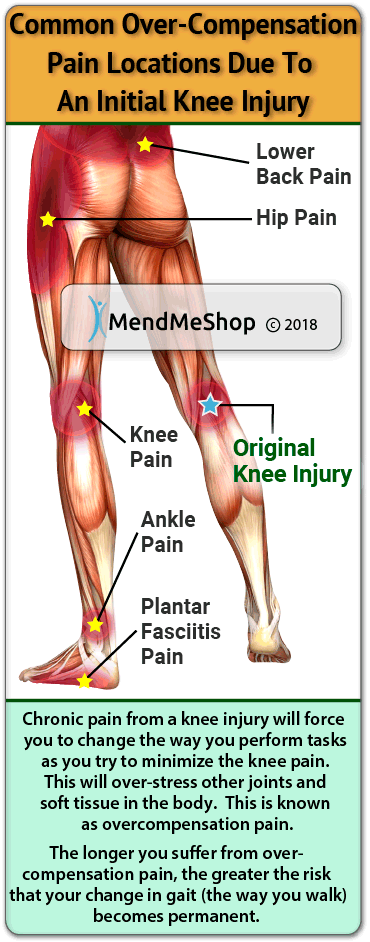 Since you are reading this, you probably know that serious knee injuries do not just disappear. Over time, it will wreak havoc on your knees, hips, ankles and lower back due to lack of movement, over-compensation and a change in gait. It will also wreak havoc on your opposite knee, due to the fact that you will be overusing it to compensate for not using the bad knee. Recovery takes a longer time for such chronic (long term) injuries, but proper healing is essential to regain strength and get you back to the activities you enjoy. Everything in the human body is connected. Any meniscus injury can lead to other injuries over time if not treated properly. You WILL subconsciously start shifting more of your weight onto your opposite leg when performing normal daily activities, like climbing the stairs or when standing for long periods of time. You may also try to limp using your opposite (healthy / stronger) leg to get back to work, activities or your sports sooner to avoid waiting for your medial meniscus injury to heal completely. Many of our clients have experienced pain in their opposite foot, ankle, knee and hip because they shift their standing weight to the opposite side of their body. For example, you might normally climb stairs by leading with your injured knee, but instead will lead with your opposite leg and hop or shuffle more than walk the stairs. Even though changing something like this seems like a really small thing, changing the way you would normally climb a set of stairs when your body isn't used to that can result in pain and injuries in your healthy knee and leg. The longer your injury endures, the greater the risk of running into serious overcompensation injuries and a permanent change in gait.Over time you'll notice that you automatically start to put more weight on your non-injured side to cope with everyday activities. When you experience pain in other areas of the body due to minimizing the pain from an older injury, this is something called "over compensation" pain. Usually degenerative medial meniscus pain will happen to your dominant knee (if you are right handed, this would be your right knee). When this happens there is a higher risk that you'll over-strain your weaker knee that's compensating for your injury, because it's just not as strong as your dominant side. Circulation Boost (Circulatory Boost) is the best treatment available to deal with over compensation issues and injury prevention by maintaining healthy blood flow in around your injured meniscus AND in your healthy knee as well. If you are also experiencing overcompensation pain in the hips, we recommend the use of a BACK/HIP TShellz Wrap® Even if you try to avoid over compensation pain in your healthy knee, you're still at risk for re-injuring your damaged meniscus. Ignoring over compensation pain and the pain felt from your meniscus injury while returning to regular activities or your job can and usually will lead to even more problems with healing. To Stop A Worsening Meniscus Tear & Reduce the Risk of a More Serious Overcompensation Injury, You Need to Heal Quickly & Completely!Time is not kind to an immobilized joint - you lose strength in your knee but worse than that, you lose the range of motion from atrophy (your flexible tendons, muscles and ligaments slowly shrink / waste away, decreasing joint elasticity). The more time that goes by with your knee immobilized, the more likely you'll wind up with a worsening meniscus tear or perhaps a secondary chronic (long term) problem stemming from reduced range of motion and/or immobility. Basically it means that your knee won't perform as well as it once did and becomes more prone to injury again later on. If you have a torn meniscus in your knee, it's very important to heal it quickly and completely. Minimizing the healing time of your medial meniscus should be an obvious goal, as meniscus tears will no doubt limit your ability to go about your daily routine; but also keep in mind that untreated meniscus tears will typically get worse over time. As stated here (pennmedicine.org), "If not treated, part of the meniscus may come loose and slip into the joint. You may need surgery to restore full knee function. Untreated meniscus tears can increase in size and lead to complications, such as arthritis." Dealing with a continuously worsening meniscus tear, chronic inflammation / swelling, loss of range of motion and an increasing risk of overcompensation injuries mean you'll have a greater chance of winding up with a chronic knee condition or a serious case that needs to be resolved with surgery. This is why it's so important to continuously use conservative treatment tools to treat and heal recurring soft tissue damage before it builds into something bigger. For anyone that is suffering from a torn meniscus, having the right tools makes all the difference. Scar TissueDuring the healing process your body fills in soft tissue tears with brittle tissue called "scar tissue". Scar tissue also grows once you've had surgery to repair your meniscus. The human body uses scar tissue as a temporary binding solution and will try to build the scar tissue as fast as possible around damaged soft tissue. The scar tissue that forms in the knee will be unorganized and won't line up properly with the healthy tissue surrounding your meniscus. This scar tissue will also attach to everything around your meniscus (including the ACL, PCL, MCL and LCL ligaments). This can result in a long-term fusing together of your tissue that stiffens up your entire knee, reducing your mobility and making your meniscus injury even more painful!
Scar tissue can become extremely problematic over time, as you have to understand that scar tissue growth can persist and accumulate quite easily. There is a condition known as "arthrofibrosis" - also known as "stiff knee syndrome". Arthrofibrosis occurs when scar tissue has built up inside the knee, causing the knee joint to shrink and tighten. As scar tissue limits joint range of motion, it is not uncommon that the patient eventually exceeds the ROM limits, causing strains/pulls and encouraging the growth of even more scar tissue. This is one of the major reasons why physical therapy is such a crucial component in the rehabilitation process - through many various methods, a physical therapist is fighting to reduce, break up and get rid of your scar tissue. It is often a painful yet necessary process. Continuous re-injury and build-up of scar tissue while staying active means you'll have a greater chance of winding up with on-going pain, and more tearing or weakening (atrophy) of soft tissue in the knee (ligaments, tendons, muscle). If you have pain and inflammation in your knee, it's very important to heal your injury quickly and completely. You must avoid the build up of scar tissue. If you don't, your meniscus tear may start you on the path of a downward spiral that could result in something much worse such as permanent loss of range of motion or osteoarthritis. This is why it's so important to continuously use conservative treatment tools to deal with your meniscal damage before it can build into something big. For any lateral meniscus tear sufferer, having the right tools means all the difference. Scar tissue is something that needs to be dealt with fast. If you try to get back into your regular daily activities after surgery with a mound of scar tissue in your joint you'll have a higher risk of re-injury. Scar tissue is just not built to withstand the pressures of regular activity. If you have scar tissue in the knee and re-injure you knee, even more scar tissue will grow to fill in those tears. If you keep falling into the dangerous cycle of re-injuring your knee without proper treatment you could end up with massive amounts of scar tissue in your joint. Your ability to move your affected joint in a normal way will be impaired as the amount of scar tissue increases. The truly get on the path toward repairing your meniscus injury through conservative treatment methods
To Start Recovery, Healing Time must be Minimized with Effective Treatment OptionsBefore we go further, it's important to understand that your body is capable of healing itself - though it requires the flow of blood to do so. When it comes to meniscus injuries, the inner third of the meniscus (known as "the white zone") really gets little to no blood flow and if you have a lateral meniscus tear in this area, your physician will probably recommend surgery to fix it. This is one of many reasons why you need to see a doctor - only they will know if the tear is "surgically necessary" (SN). A physician will always try to opt for the conservative treatment first - usually, it works although it takes time to heal. If your meniscus tear is outside the white zone, then, with good blood flow in the area, the damaged fibrocartilage will receive oxygen and much needed nutrients while flushing away toxins and waste - otherwise known as healing. Inflammation and reduced movement (lack of activity or on-going immobility) reduces the flow of blood to an area that's already receiving very little blood flow which is why it is important to keep it down. If you are still active with a meniscus tear, you run a risk of increasing the severity of the injury; if there has been some healing, you could re-injure your meniscus all over again and/or easily make it worse. Blood Flow - the natural healing process in your body - needs assistance for lateral meniscus injuries because blood flow is greatly reduced when you're injured. When treating a lateral meniscus injury or really any type of meniscus or knee injury (ie. lateral meniscus tear, bucket-handle tear, posterior horn tear, or anterior horn tear), you need to increase blood flow to your injury while your knee is healing. This increase in blood flow will accelerate your body's own ability to heal itself. We believe the Knee TShellz Wrap® is to be a highly effective blood flow stimulation device for the knee that is registered with the FDA and available for home use. If you have a lateral meniscus injury, it's very important to heal it quickly and completely. Minimizing the healing time should be an obvious goal, as a chronic lateral meniscus tear will limit your ability to go about your daily routine for a long period of time. A seemingly small, nagging injury in your meniscus that's not properly treated can lead to a chronic painful degenerative lateral meniscus tear that can persist for months or even years if not properly treated. Torn Lateral Meniscus Home Remedies |
        |








